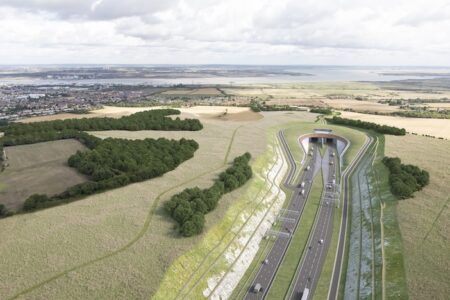According to new analysis by Nissan there will be more public locations to charge electric cars in the UK than petrol (gas) stations by the summer of 2020.
At the end of 2015, there were just 8,472 fuel stations in the UK, down from 37,539 in 1970. Assuming a steady rate of decline, Nissan predicts that this will fall to under 7,870 by August 2020. In contrast, the number of public electric vehicle (EV) charging locations is expected to reach 7,900 by the same point in time. However, the accelerating adoption of EVs means this crossover could happen a lot sooner. The extrapolation of these predictions is based on Energy Institute figures that show there were 9,764 fuel stations in the UK at the end of 2005 and 8,472 by 2015 an average decrease of 129 per year. Conversely, there were 913 charging locations in the UK by end of 2012 and 3,646 by 2015 an average increase of 911 per year.
More than 75% of UK fuel stations have closed in the last 40 years, while the number of EV charging locations has increased from a few hundred in 2011 to more than 4,100 locations in 2016, as electric car sales take off. According to Go Ultra Low, the joint government and car industry campaign, more than 115 electric cars were registered every day in the first quarter of 2016, which is equivalent to one every 13 minutes. The campaign also believes electric power could be the dominant form of propulsion for all new cars sold in the UK as early as 2027, with more than 1,300,000 electric cars registered each year since records began in 2011 when the UK government introduced the Plug-in Car Grant (PiCG) initiative, offering electric car buyers an incentive to go green.
While the vast majority of EV owners charge at home, 98% of UK motorway services have charging stations, including rapid connectors that can charge a Nissan Leaf’s battery to 80% in just 30 minutes. Nissan’s recent partnership with world-renowned architects Foster + Partners provided a conceptual vision for the fuel station of the future; the result isn’t a conventional forecourt at all, but a combination of vehicle-to-grid, battery storage, wireless charging, autonomous drive technology and over-the-air connectivity, all combining to revolutionize how energy is used and distributed across Europe’s major cities. Nissan believes these technologies, run in tandem with all-electric vehicles, will play an increasingly important role in helping major cities reduce harmful emissions.
“As electric vehicle sales take off, the charging infrastructure is keeping pace, and paving the way for convenient all-electric driving,” commented Edward Jones, EV manager for Nissan Motor (GB). “Combine that with constant improvements in our battery performance, and we believe the ‘tipping point’ for mass EV uptake is upon us. As with similar breakthrough technologies, the adoption of electric vehicles should follow an ‘S-curve’ of demand. A gradual uptake from early adopters accelerates to a groundswell of consumers buying electric vehicles just as they would any other powertrain.”




